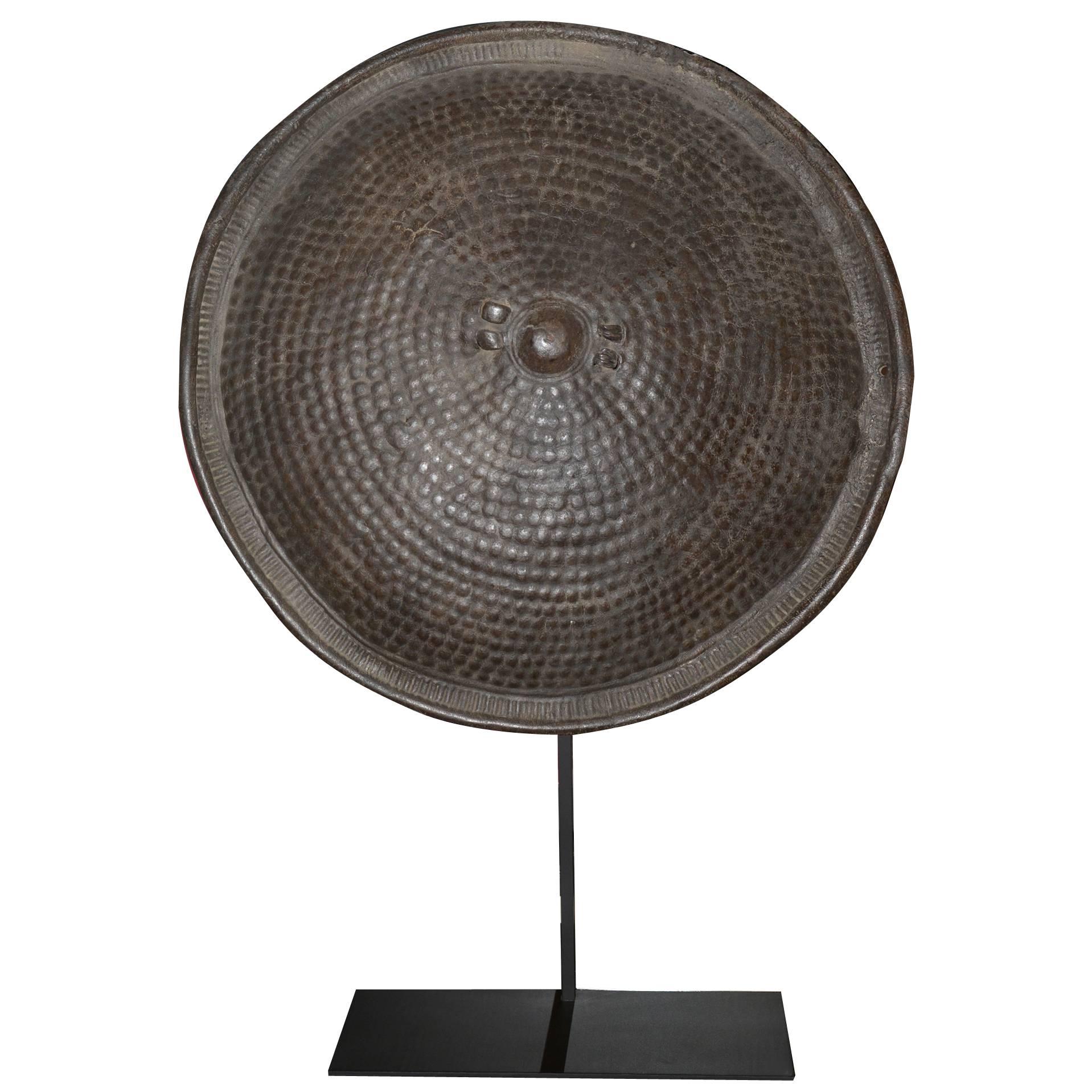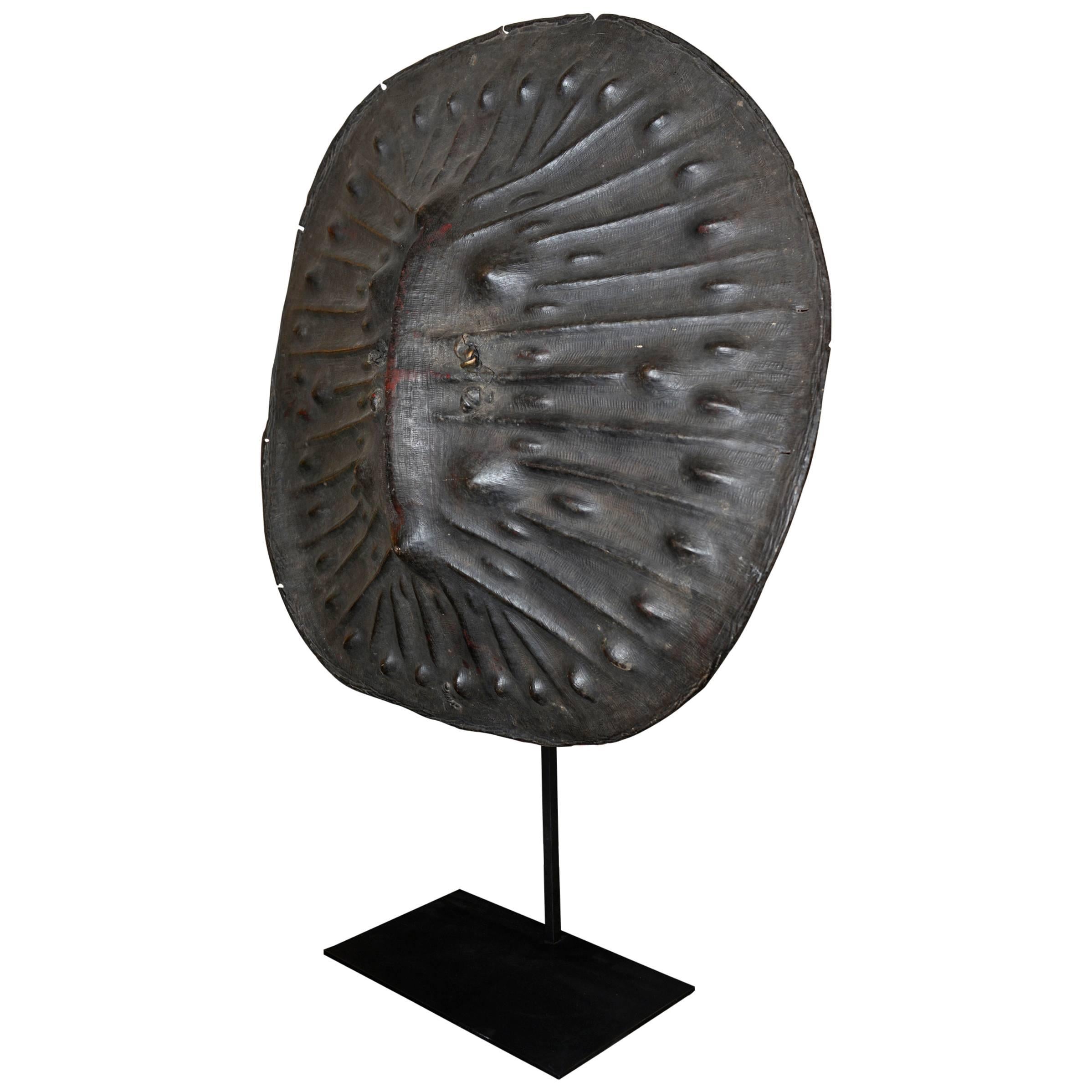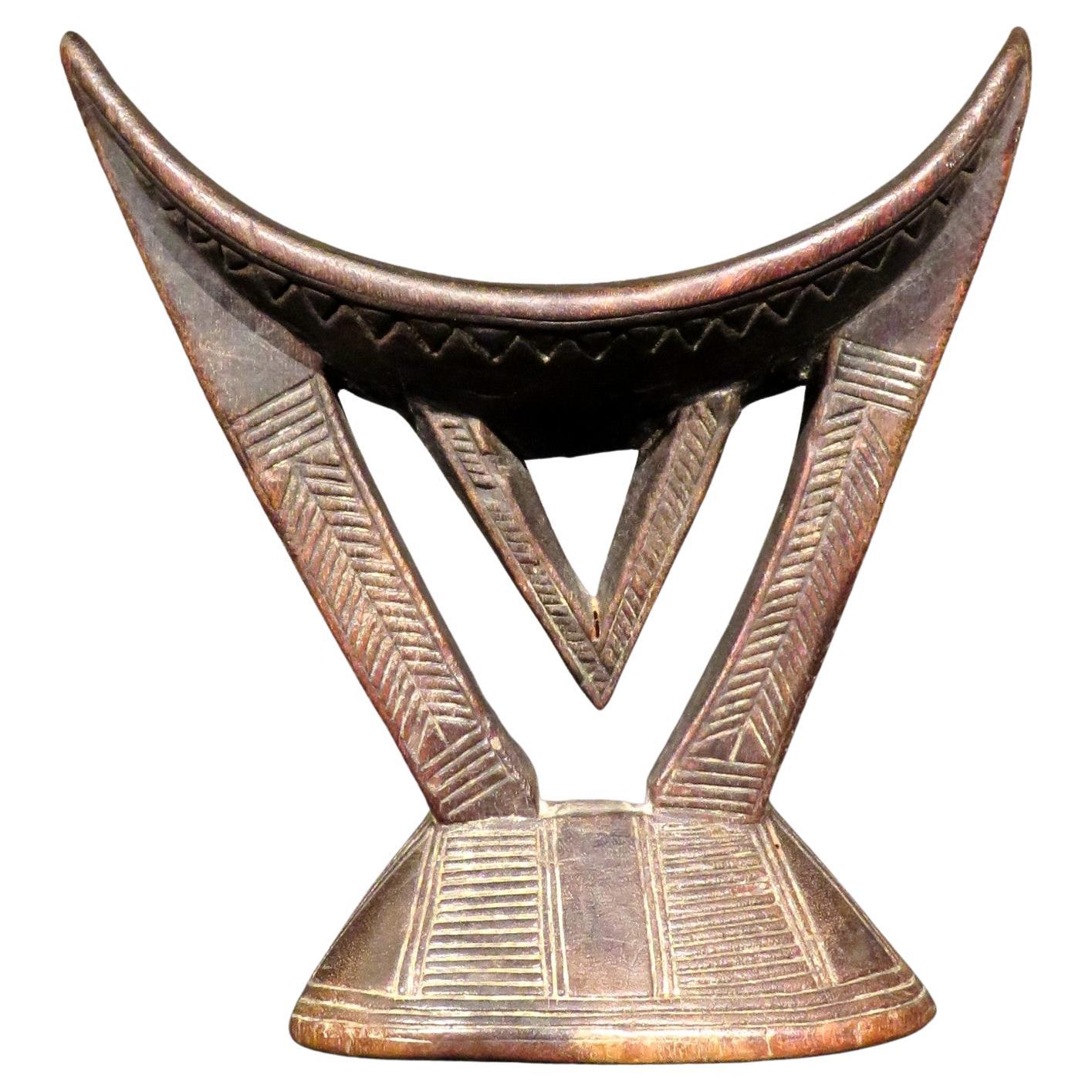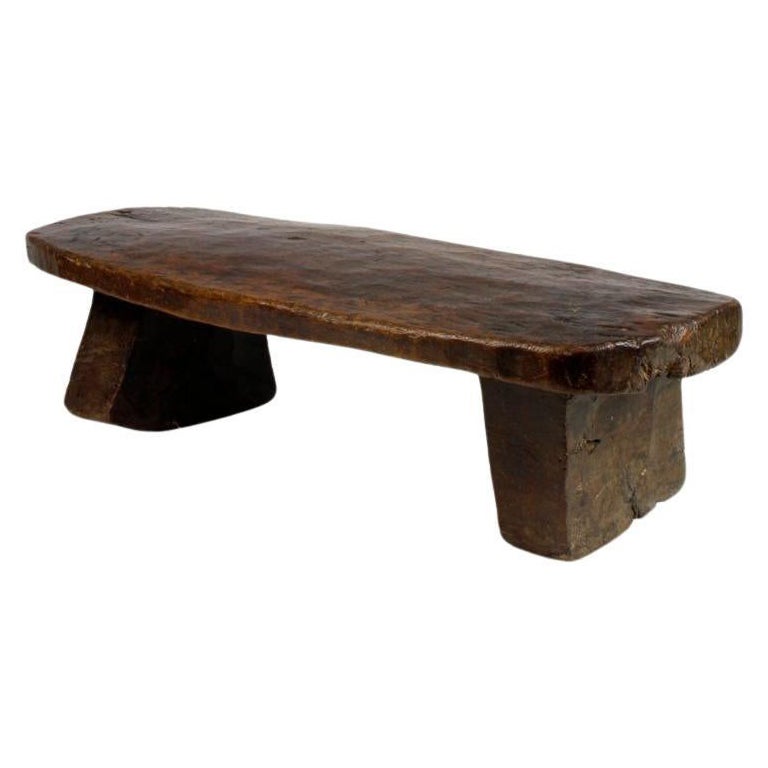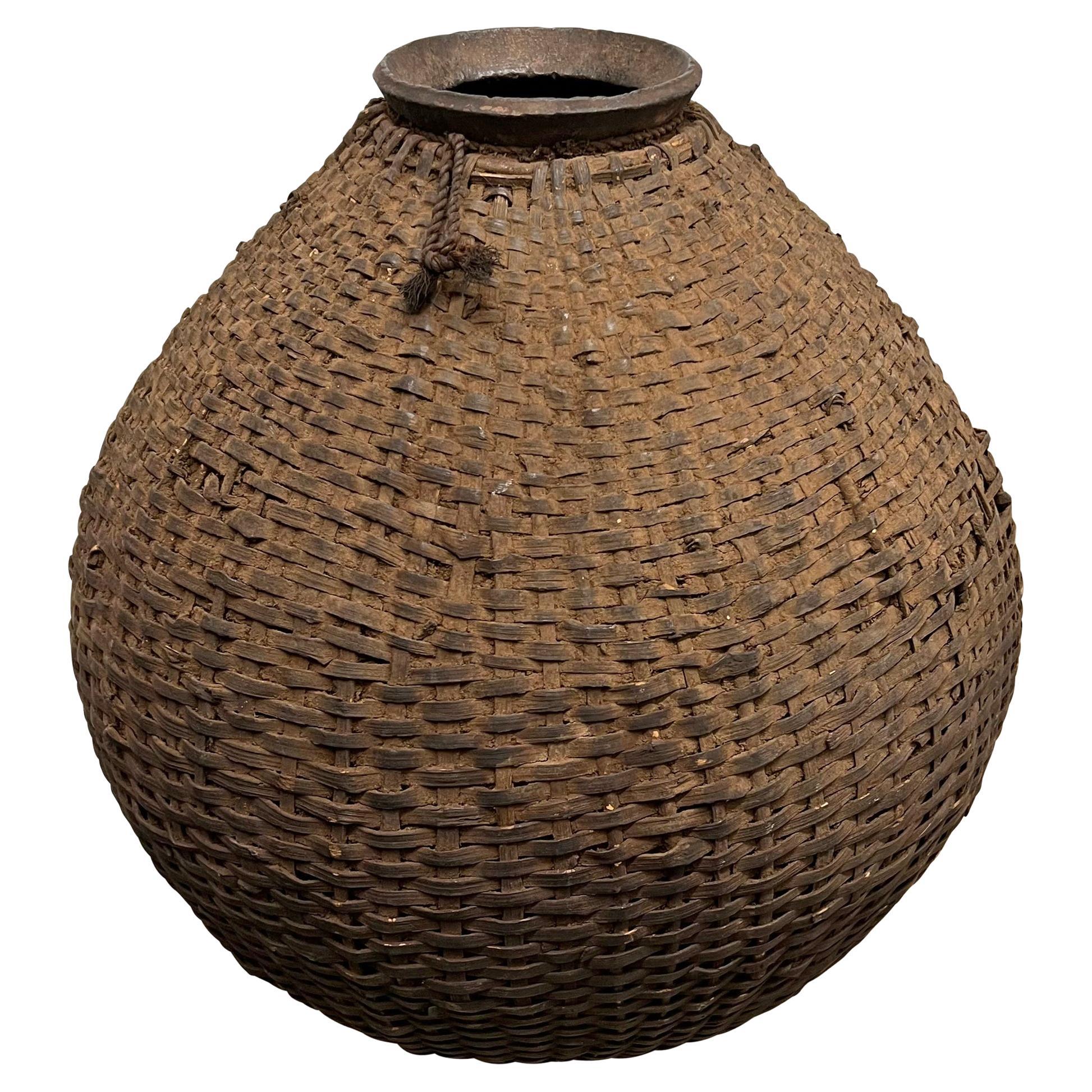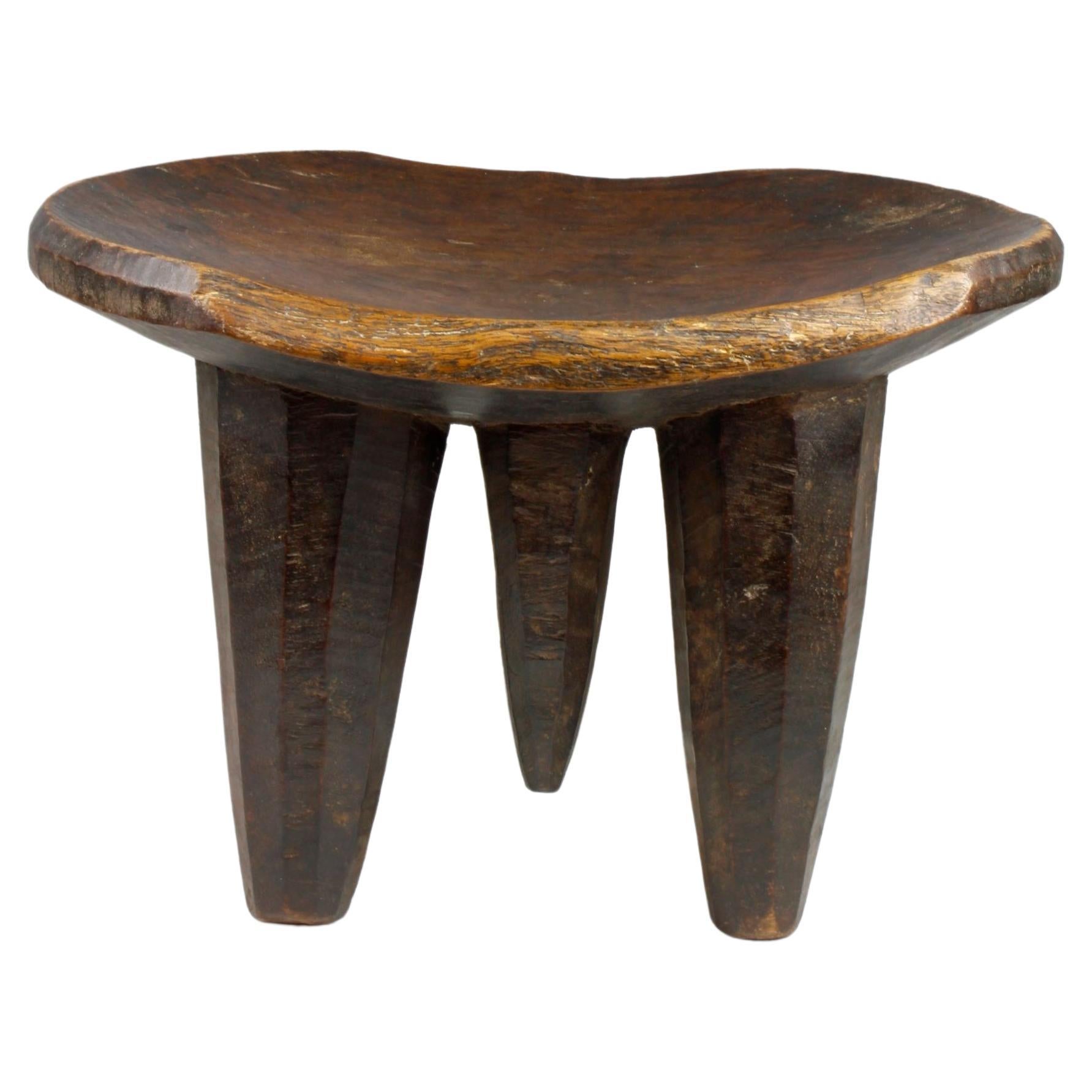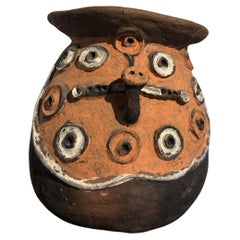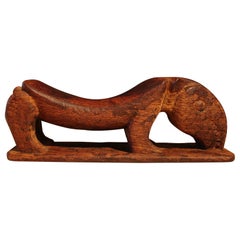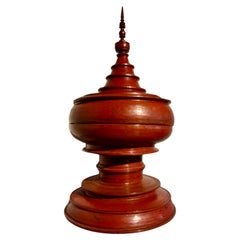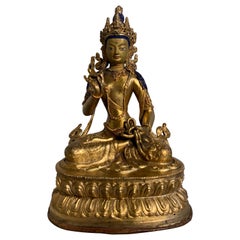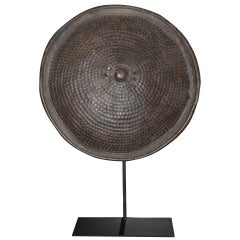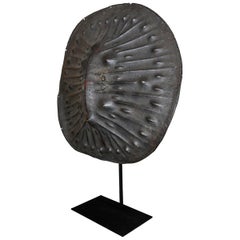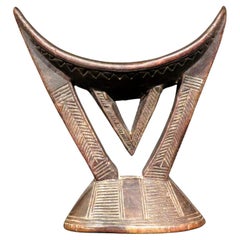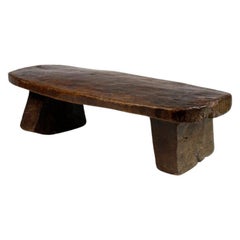Items Similar to Pair African Gourd Storage Vessels, Kenya or Ethiopia, early-mid 20th Century
Want more images or videos?
Request additional images or videos from the seller
1 of 7
Pair African Gourd Storage Vessels, Kenya or Ethiopia, early-mid 20th Century
About the Item
A fantastic pair of large African gourd storage vessels with native repairs, early to mid 20th century, Ethiopia or Kenya.
This pair of dried and hollowed gourd vessels would originally have been used to store liquids. The gourds have generous, bulbous bodies with short and tapered curved necks, offering a natural and ergonomic hand hold.
The high value the original owners placed on these pieces can be seen in the applied native repairs, featuring patches and woven fiber. Years of use have given these gourds a wonderfully deep and rich patina.
These are most likely Giant African Drum Gourds, a type of calabash grown specifically for turning into functional items. Once ripe and of appropriate size, the gourd is first dried, before the interior is scraped out. Once fully dried, the gourds are perfect for water transport and storage. They are also used to store porridge.
Several similar examples can be found in the National Museums of Kenya, Nairobi, where they are attributed to multiple groups.
- Dimensions:Height: 18 in (45.72 cm)Diameter: 12 in (30.48 cm)
- Sold As:Set of 2
- Style:Tribal (Of the Period)
- Materials and Techniques:
- Place of Origin:
- Period:
- Date of Manufacture:Early/Mid-20th Century
- Condition:Repaired: With old native repairs, including plugs and woven fiber repairs. Wear consistent with age and use. Very good condition, with old, native repairs.
- Seller Location:Austin, TX
- Reference Number:1stDibs: U100830894743
About the Seller
5.0
Gold Seller
Premium sellers maintaining a 4.3+ rating and 24-hour response times
Established in 2001
1stDibs seller since 2010
340 sales on 1stDibs
Typical response time: 1 hour
- ShippingRetrieving quote...Shipping from: Austin, TX
- Return Policy
Authenticity Guarantee
In the unlikely event there’s an issue with an item’s authenticity, contact us within 1 year for a full refund. DetailsMoney-Back Guarantee
If your item is not as described, is damaged in transit, or does not arrive, contact us within 7 days for a full refund. Details24-Hour Cancellation
You have a 24-hour grace period in which to reconsider your purchase, with no questions asked.Vetted Professional Sellers
Our world-class sellers must adhere to strict standards for service and quality, maintaining the integrity of our listings.Price-Match Guarantee
If you find that a seller listed the same item for a lower price elsewhere, we’ll match it.Trusted Global Delivery
Our best-in-class carrier network provides specialized shipping options worldwide, including custom delivery.More From This Seller
View AllPapua New Guinea Chambri Lakes Pottery Vessel, Mid 20th century
Located in Austin, TX
A delightful and fanciful Chambri Lake fired and pigmented pottery vessel with applied molded face design, mid 20th century Aibom village, Chambri Lake, Middle Sepik River region, Pa...
Category
Mid-20th Century Papua New Guinean Tribal Tribal Art
Materials
Pottery
Indonesian Tribal Anteater Form Headrest, Irian Jaya, Mid-20th Century
Located in Austin, TX
A whimsical and intriguing headrest carved from a single piece of hardwood in the form of an anteater. The curved back of the animal would have supported the neck and displays a wonderfully warm patina from tribal use.
The anteater's over sized head has been carved in a charming manner.
Found in Sumatra, but most likely traded from Irian Jaya.
Category
Mid-20th Century Indonesian Tribal Tribal Art
Materials
Hardwood
Burmese Red Lacquer Offering Vessel, Hsun-Ok, Early 20th Century, Burma
Located in Austin, TX
A striking Burmese red lacquered stupa-shaped offering vessel, hsun-ok, early 20th century, circa 1920, Burma (Myanmar).
The hsun-ok of traditional stupa form, featuring a stepped ...
Category
Early 20th Century Burmese Lacquer
Materials
Bamboo, Lacquer
Nepalese Gilt Bronze Bodhisattva 'Amoghapasha?', Early to Mid-20th Century
Located in Austin, TX
A beautiful and unusual gilt bronze figure of a Bodhisattva, possibly Amoghapasha, Nepal, early to mid-20th century, circa 1930s or 1940s.
The regal figure possibly depicting the bodhisattva Amoghapasha, the Unfailing Lasso. The enlightened being is portrayed seated upon a high double lotus pedestal. He is dressed as an Indian prince, wearing a luxurious foliate patterned dhoti around his waist and a billowing scarf around his shoulders. . His torso bare save for the jeweled necklaces and the sacred thread. A five pointed crown with an image of Amitabha Buddha in the central point graces his head.
His princely face cold painted with beautiful detail, his hair colored blue with crushed lapis lazuli, indicating his peaceful nature. Amoghapasha holds a lasso in one hand, an axe in the other. He is considered an emanation of Avalokiteshvara. A bodhisattva of compassion, Amoghapasha is so named because of the lasso he holds in his hand. The lasso represents his vast compassion which is thought to extend to encompass all beings, bringing them into a state of perfection and enlightenment.
The copper base plate, seemingly a later replacement, has been inscribed with a visvajra (double vajra...
Category
Mid-20th Century Nepalese Tibetan Sculptures and Carvings
Materials
Lapis Lazuli, Bronze
Chinese Hardstone Carved Mythical Beast Rhyton Vessel, 20th Century
Located in Austin, TX
An early 20th century Chinese Republic period carved hardstone drinking vessel, called a rhyton, in the form of a mythical pixiu.
The archaistic vessel carved in the Han Dynasty style from a single block of lavender gray nephrite and featuring a large horn-shaped cup being supported by a mythical pixiu. The pixiu carved with a nice sense of motion, head reared back, mouth open, and claws bared. The cup bearing a design of large horned taotie ogre masks on either side. The stone with areas of artificial "calcified" patination.
The pixiu is an ancient beast from...
Category
Early 20th Century Chinese Han Sculptures and Carvings
Materials
Jade
Mounted Indonesian Dyed Silk Lawon, Diamond Pattern, Early 20th Century
Located in Austin, TX
A striking Indonesian silk kain lawon with a central diamond pattern, Sumatra, Indonesia, late 19th or early 20th century.
The ceremonial shawl, call...
Category
Antique Early 1900s Indonesian Tribal Tapestries
Materials
Silk
You May Also Like
African Shield Wallaïta from Ethiopia Early 20th Century
Located in Paris, FR
African shield Wallaïta from Ethiopia, early 20th century.
Base: 40 x 17cm.
Category
Early 20th Century Ethiopian Tribal Art
Materials
Leather
African Shield Oromo from Ethiopia Early 20th Century
Located in Paris, FR
African shield Oromo from Ethiopia, early 20th century.
Base 34 x 20cm.
Category
Early 20th Century Ethiopian Tribal Art
Materials
Leather
Early 20th Century East African Carved Headrest, Ethiopia (Kambatta People)
Located in Ottawa, Ontario
Showing a crescent shaped headrest braced by flattened 'V' shaped supports rising from a cupped base, decorated overall with hand carved linear motifs and exhibiting an old rubbed su...
Category
Early 20th Century Ethiopian Tribal Tribal Art
Materials
Wood
Early 20th Century Ethiopian Low Stool
Located in London, GB
This stool, from the Gurage culture of Ethiopia, has been carved from a single piece of heavy, dense wood. The stool exhibits a flat, low form and over time, has developed a lovely d...
Category
Early 20th Century Ethiopian Tribal Tribal Art
Materials
Wood
Early 20th Century Palm Wine Vessel
Located in Chicago, IL
An incredible early 20th century Makenge hand-built ceramic palm wine pot with a graceful shape including a narrow neck and a wide belly. The pot is covered ...
Category
Early 20th Century Zambian Tribal Vases
Materials
Ceramic, Natural Fiber
Early 20th Century Ethiopian Stool with Phallic Form
Located in London, GB
Finely carved from a single piece of wood, this stool from the Sidamo region of Ethiopia displays a wonderful sculptural quality. Four cone-shaped legs support the stool's slightly-c...
Category
Early 20th Century Ethiopian Tribal Tribal Art
Materials
Wood
